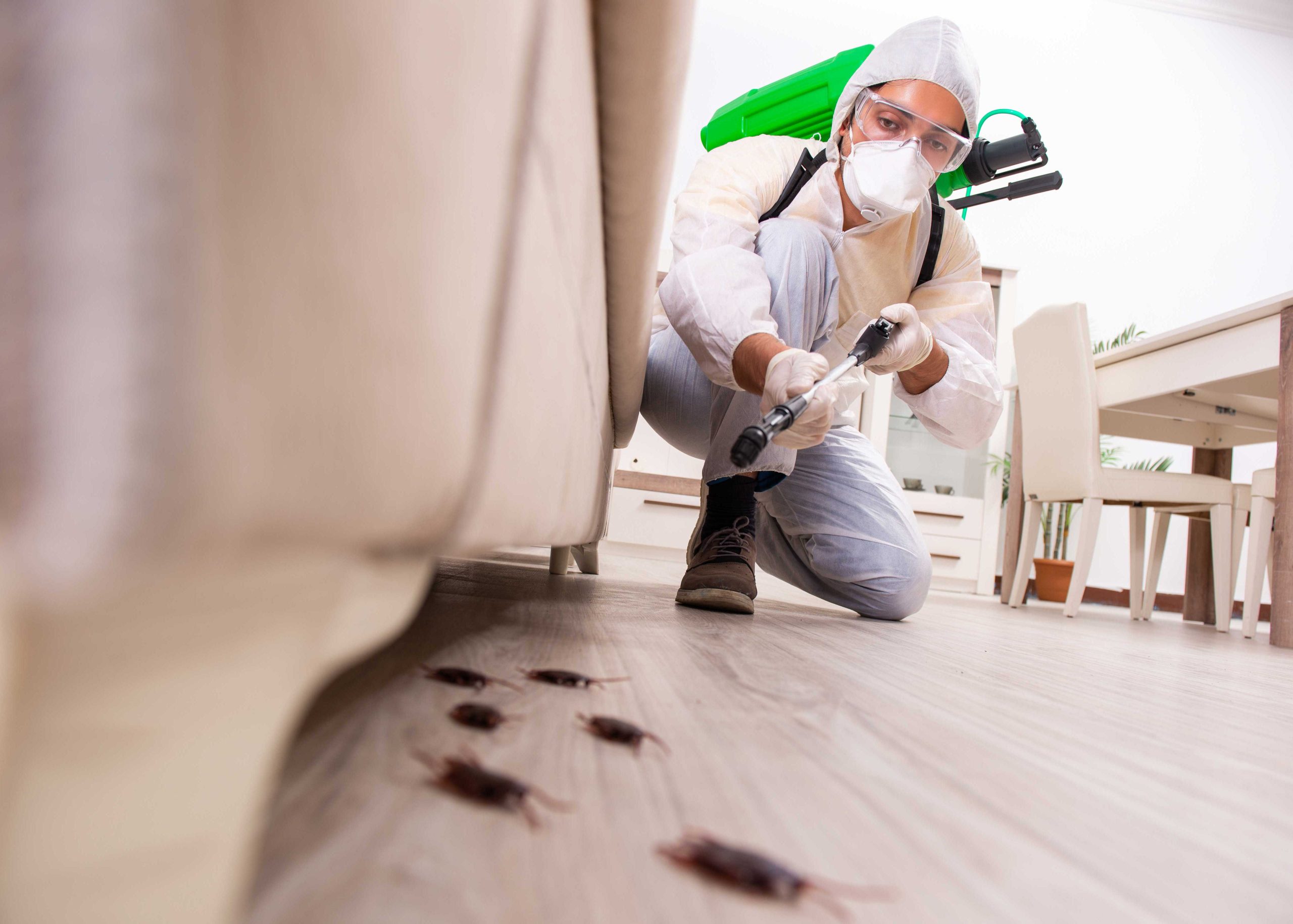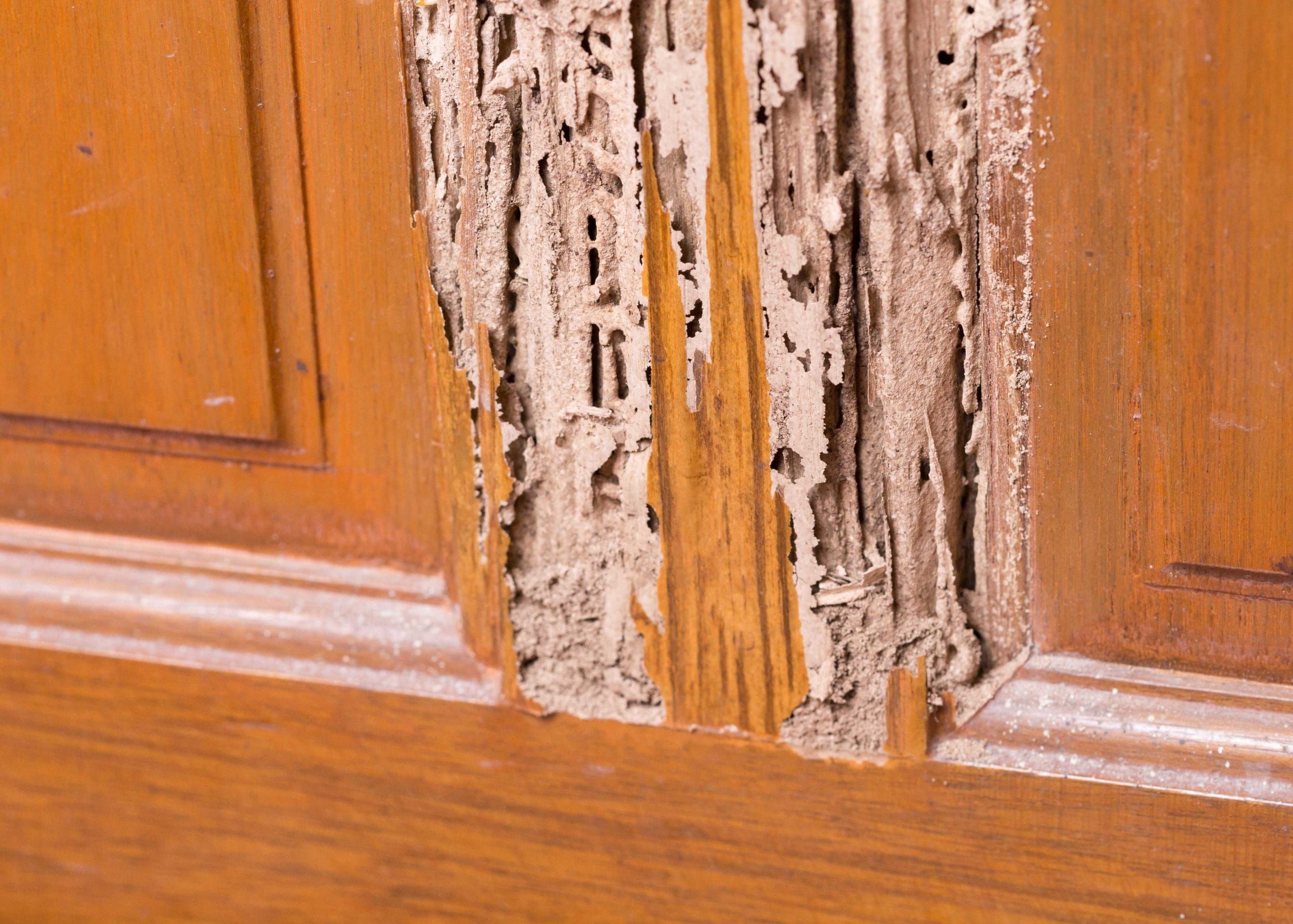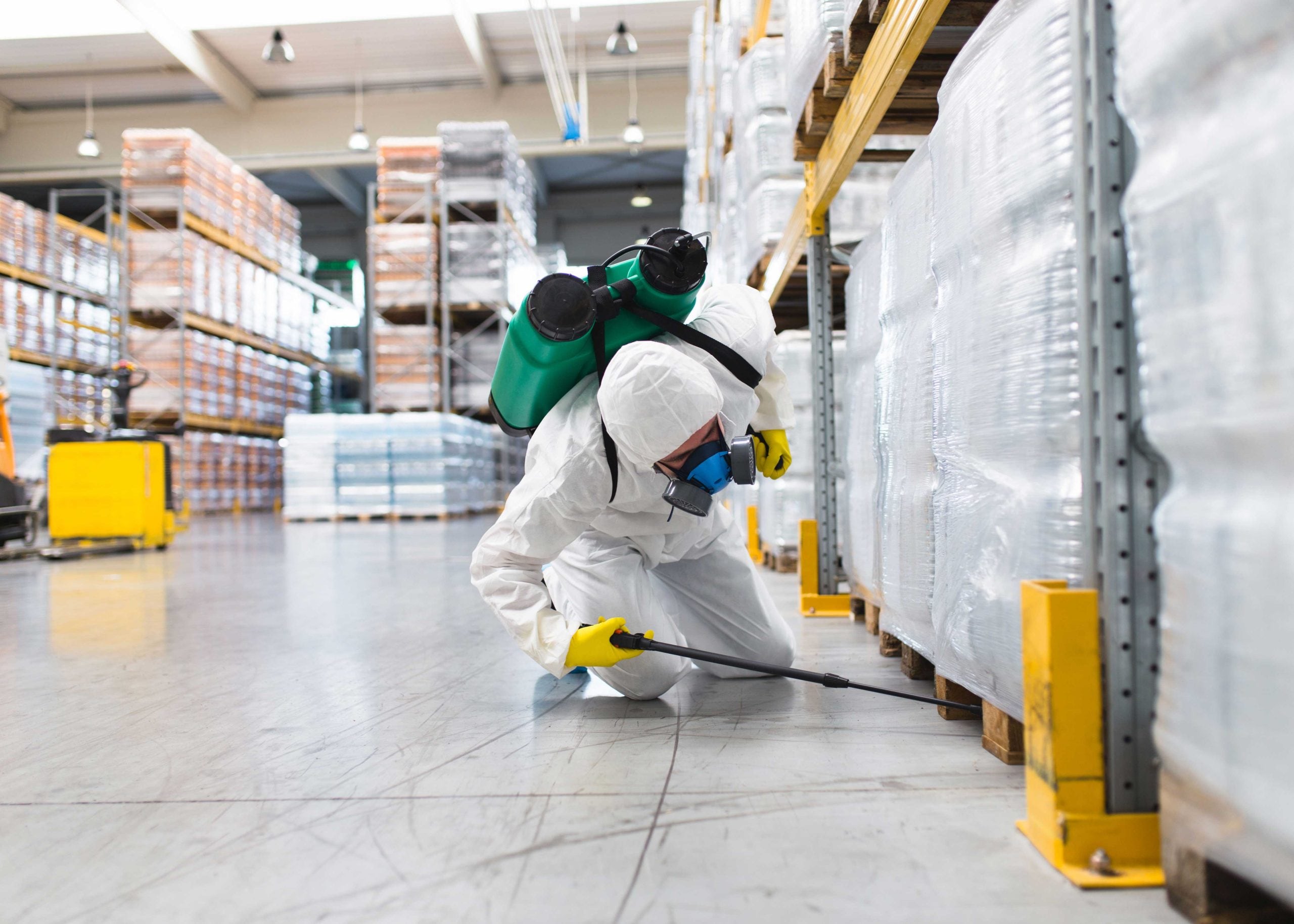Termite inspection professionals ready to serve in Glasgow
Regular termite inspections and removal services for your home are crucial to safeguarding against termite damage. Professional exterminators in Glasgow can provide comprehensive inspections and removal services to ensure your property is termite-free, preventing costly damage and ensuring your peace of mind.
In addition to removing any termite infestations, professional exterminators can also diagnose potential issues before they become major problems. By taking proactive measures to protect your home, you can save money in the long run and avoid costly termite damage.
For homeowners in Glasgow, Delaware, investing in professional termite removal services is a smart choice for protecting your home and ensuring your peace of mind. Don’t wait until it’s too late – contact a trusted exterminator in Glasgow today.

Identify these indicators of termite infestation damage

Termites: The Silent Destroyers
Termites are social insects that form large colonies, with millions of individuals working together to construct and maintain their habitat. They are known for their wood-eating habits, which can cause significant damage to buildings and other structures made of wood. Termites are a major concern for homeowners and businesses alike, as they can silently and quickly cause extensive damage that can be costly to repair.
Characteristics of Termites
Termites have several distinct characteristics that set them apart from other insects, including:
- Winged Reproductive Form: Termites have a winged reproductive form called alates, which are responsible for creating new colonies.
- Social Structure: Termites live in highly organized colonies with a strict caste system, including workers, soldiers, and reproductive individuals.
- Wood-Eating Habits: Termites primarily feed on wood and other cellulose materials, which they break down using enzymes produced in their digestive system.
- Cryptobiotic Behavior: Termites avoid light and moisture, and typically build their nests underground or within the wood they infest.
Types of Termites
There are several common types of termites that can cause damage to structures:
- Subterranean Termites: Subterranean termites are found throughout the world and build their nests underground. They can travel through the soil and enter structures through cracks or gaps in the foundation.
- Drywood Termites: Drywood termites live in dry wood and do not require soil contact. They can infest furniture, structural lumber, and other wooden components of buildings.
- Dampwood Termites: Dampwood termites prefer moist wood and often infest wood that has been damaged by water or other moisture sources.
- Formosan Termites: Formosan termites are a highly destructive species that can cause significant damage to structures in a short amount of time.
Signs of a Termite Infestation
Termite infestations can be difficult to detect, as they often occur out of sight. However, there are several signs that may indicate a termite problem:
- Mud Tubes: Subterranean termites build mud tubes, which are small tunnels that they use to travel between their nest and food sources.
- Hollow-Sounding Wood: Wood that has been damaged by termites may sound hollow when tapped with a hammer or screwdriver.
- Buckling Floors or Walls: Termite damage can weaken the structural integrity of wood, causing floors or walls to buckle or sag.
- Discarded Wings: Alates may shed their wings after mating, which can be an indication of a nearby termite colony.
- Swarms of Flying Termites: Large swarms of flying termites may be a sign of a new infestation or an established colony that is expanding.
Termite Prevention and Control
Preventing and controlling termite infestations is essential for protecting buildings and other structures made of wood. Several effective methods can be employed:
- Moisture Control: Termites thrive in moist environments, so reducing moisture levels around buildings can help prevent infestations.
- Wood Treatment: Wood can be treated with chemicals that make it unappealing or toxic to termites.
- Bait Stations: Bait stations can be placed around buildings to attract and eliminate termites before they can enter the structure.
- Professional Inspections: Regularly scheduled professional inspections can help detect termite infestations early, allowing for prompt treatment.
Termite Control: A Critical Homeowner’s Responsibility
Termite infestations can have serious consequences for homeowners, including costly repairs and even structural damage to their property. It is crucial to be aware of the signs of termites and to take proactive measures to prevent and control them. By following the recommended prevention and control strategies, homeowners can protect their homes from these destructive pests.
For more information on termites and effective termite control methods, please consult reputable sources such as universities, government agencies, and pest control professionals.

Termites: The Silent Destroyers of Homes
Termites, often referred to as “silent destroyers,” pose a significant threat to homes and structures worldwide. These insects feed on wood, causing damage that may go unnoticed until it’s too late. Understanding the nature and habits of termites is crucial for homeowners to protect their properties effectively.
Types of Termites and Their Distribution
There are approximately 3,100 known species of termites, but only a handful of them are known to cause damage to structures. The two most common types found in the United States are:
- Subterranean Termites: The most widespread type, found in warm climates. They live underground and build elaborate tunnels to access wood sources.
- Drywood Termites: Found in drier areas, these termites live and feed within the wood itself, causing damage that is often harder to detect.
Signs of a Termite Infestation
Spotting the early signs of a termite infestation is essential to prevent severe damage. Here are some indicators to look out for:
- Mud Tubes: Subterranean termites build mud tubes to protect themselves from the elements while traveling between their underground nests and food sources.
- Damaged Wood: Chewed or hollowed-out wood with visible tunnels or galleries indicates termite activity.
- Swarming Termites: During the reproductive season, termites may swarm around windows, doors, or other openings as they search for new sites to establish colonies.
- Discarded Wings: Drywood termite swarmers shed their wings after mating, leaving behind piles of small, transparent wings near infested wood.
Dangers of Termite Damage
Termite infestations can lead to extensive damage to buildings and other wooden structures. Ignoring the problem can result in:
- Structural Damage: Termites can weaken load-bearing members such as beams, joists, and supports, compromising the stability of the structure.
- Property Value Loss: Severe termite damage can significantly reduce the value of a property and make it difficult to sell or insure.
- Safety Hazards: Extensive termite damage can cause structural failures, leading to potential collapse and injury.
- Costly Repairs: Repairing termite damage is a time-consuming and expensive process, requiring specialized treatment and replacement of damaged wood.
Prevention and Control of Termites
Protecting your home from termites requires a multifaceted approach. Here are some effective strategies:
- Moisture Control: Termites are attracted to moisture, so it’s crucial to fix any leaks or water problems around your property.
- Wood-to-Ground Contact Elimination: Keep wood from coming into direct contact with the ground by using concrete or metal supports for decks and patios.
- Termite Barriers: Physical barriers, such as treated wood or metal shields, can be installed around the foundation of your home to prevent termite entry.
- Chemical Treatments: Termite control professionals use specialized chemicals to create a protective barrier around your property or directly treat infested areas.
Importance of Professional Termite Inspection and Control
Regular termite inspections by qualified professionals are essential for early detection and effective management of infestations. Trained inspectors can identify signs of termite activity, determine the extent of damage, and recommend appropriate control measures.
DIY termite control methods are generally not recommended. Improper treatment can worsen the infestation and pose health risks. Trusting reputable termite control companies ensures that proper methods and materials are used for effective and safe protection of your property.
Conclusion
Termites are a formidable threat to homes and structures, posing significant risks to their integrity and safety. By understanding the different types of termites, their habits, and the signs of their presence, homeowners can take proactive measures to prevent infestations. Regular termite inspections and professional control services are essential to safeguard properties from the costly and damaging effects of these silent destroyers.

Termites: The Silent Destroyers
Termites, often referred to as white ants, are relentless wood-eating pests that can cause extensive damage to your property without any visible signs of infestation. They are capable of silently destroying the structural integrity of your home, making early detection and prompt termite treatment crucial for property preservation.
Hidden Havoc: The Damaging Effects of Termites
- Structural Damage: Termites feed on cellulose, a component found in wood, causing extensive structural damage to your home’s framework, walls, and roof.
- Foundation Compromise: If left untreated, termite infestations can weaken the foundation of your home, leading to potential collapse and severe safety hazards.
- Costly Repairs: Termite damage often requires extensive repairs, including wood replacement, structural reinforcements, and cosmetic renovations.
Signs of a Termite Infestation
Detecting a termite infestation can be challenging as they often operate unseen within the concealed areas of your home. However, there are some telltale signs to watch out for:
- Mud Tubes: Termites build mud tubes to travel between their nest and food sources. If you notice these pencil-sized, winding tubes on walls, baseboards, or near your home’s foundation, it’s a sign of termite activity.
- Hollow-Sounding Wood: Tapping on wood that sounds hollow or produces a papery texture could indicate that termites have consumed the wood from within.
- Discarded Wings: Termite swarmers, the reproductive members of the colony, shed their wings after mating. Finding these transparent wings near windows, doors, or light fixtures is a sign of an active infestation.
- Frass: Termite droppings, known as frass, resemble fine sawdust or coffee grounds and can accumulate near termite activity areas.
Professional Termite Treatment: Essential for Property Protection
If you suspect a termite infestation, seeking professional termite treatment is imperative to prevent further damage and ensure the safety of your property. Our team of certified termite specialists utilizes advanced techniques and eco-friendly solutions to eliminate termite colonies effectively.
- Comprehensive Inspections: Our experts conduct thorough inspections to locate termite infestations, assess the extent of damage, and identify the termite species involved.
- Customized Treatment Plans: We develop personalized treatment plans tailored to the specific needs of your property, ensuring targeted and effective termite eradication.
- Variety of Treatment Options: Depending on the infestation severity and property structure, we employ various treatment methods, including liquid termiticides, baiting systems, and fumigation.
- Warranty and Protection: Our services are backed by warranties and protection plans, providing peace of mind and ensuring ongoing protection against termite threats.
Benefits of Professional Termite Treatment
- Property Preservation: Prompt termite treatment safeguards your home from structural damage, preventing costly repairs and maintaining its value.
- Health and Safety: Termites can compromise the structural integrity of your home, creating potential safety hazards for your family and pets.
- Peace of Mind: Professional termite treatment provides reassurance that your property is protected from these destructive pests, giving you peace of mind.
- Cost Savings: Early termite detection and treatment can prevent extensive damage and the associated repair expenses.
Prevention Measures: Minimizing Termite Risk
While professional termite treatment is essential, implementing preventive measures can further minimize the risk of infestation:
- Moisture Control: Termites thrive in moist environments. Fix leaky faucets, clear gutters, and ensure proper drainage around your property.
- Wood Removal: Remove wood debris, old firewood, and stumps from your yard, as they can attract termites.
- Foundation Inspection: Regularly inspect your home’s foundation for cracks or gaps that could provide entry points for termites.
- Regular Inspections: Schedule annual termite inspections to detect and address infestations early on.
Conclusion
Termites pose a significant threat to the integrity and safety of your property. Ignoring termite infestations can have severe consequences. By recognizing the signs of termite activity, partnering with professional termite specialists, and implementing preventive measures, you can effectively protect your home from these destructive pests and ensure its longevity.
Contact us today to schedule a thorough termite inspection and safeguard your property from the damaging effects of termites.
Get Your Local EstimateEnsure your home's safety with a termite control professional
1. Contact our team or fill out our local estimate form to get in touch
Need termite removal services? Our local network of experts can help! We make it easy to connect with a professional in your area. All you need to do is call our team or fill out our local estimate form. You won’t be charged until you decide to proceed with one of our trusted professionals. Get top-notch termite removal services today!
2. Connect with a termite extermination expert in Glasgow
Looking for a Glasgow termite removal expert? We’ve got you covered. Filling out our form is a great option if you need to connect with an expert at a later time. If you need help right away, give our team a call. Our experts are ready to provide you with an estimate over the phone. They may also need to conduct some basic termite inspections before giving you an estimate.